 Campbell Island (above) – 10 Km out at sea from the “Braveheart”
Campbell Island (above) – 10 Km out at sea from the “Braveheart”
“Never again” I said to Ken, ZL2HU as we departed the boat in 1996 after the ZL8RI Kermadecs Dxpedition. Fortunately, we both have short memories and the exhilaration of ZL8RI was with us. Within two weeks, I said to Ken “We have to do Campbell”. “I don’t even want to think about it for 3 months” he replied Three months later his reply to the same question was “When” We both agreed on January 1999 as it is summer holiday time in New Zealand. But this was not going to be a traditional summer holiday as Campbell Island is 1400 km and 52 degrees South with a sub-Antarctic climate. Getting there was going to be a problem. Getting a permit was even more difficult as Campbell Island is a nature reserve, protected and administered by the New Zealand Department of Conservation. Making ZL9CI a successful Dxpedition was going to be the challenge.
Bureaucracy and all that
The first hurdle was obtaining a permit. The Kermadec DX Association was known to the NZ DoC. We dealt with them in obtaining a permit for the Kermadecs. They had no problem with us as a group as they knew that we were only interested in Amateur Radio and our track record was impeccable. They would have been happy to allow us to stay overnight, but that would go against their written policy of “No overnight tourist visits” except for DoC personnel. They felt that because Campbell Island has a rich abundance of flora and fauna, any tourist overnight stay would impact on the island’s environment. If the DoC let us stay, then they would have to allow other groups to stay and there are hundreds of organizations around the world that would love to visit Campbell Island. The DoC stipulated that we must take their representative with us to supervise our activities.
Ken used every possible argument to persuade the DoC to give us special dispensation. We knew that no overnight stays would limit our LF activities. Numerous letters were exchanged and at the end of the day, it was take it or leave it. Activate Campbell Island with some loss of nighttime operations or don’t activate it at all. We made the decision in early 1997 that we had to go, in spite of the restrictions. New Zealand has applied to the UN to give Campbell Island “World Heritage Park” status which could mean even more restrictions in the future. It is a growing trend that Governments around the world are increasingly more protective of their islands. This kind of governmental protectionism will make rare locations even more rare in the future. Our Permit was duly issued by the DoC and the overnight restrictions remained.
Objectives
It was clear from the outset that this operation must not fail from lack of management and organization. Ken, ZL2HU the Dxpedition organizer was very skilled in dealing with bureaucracy. Lee ZL2AL enjoyed the logistics planning and dealing with the team members and problems. To be successful, we needed excellence in leadership, and excellent team, and a committed group of support “pilots” and helpers. We also needed reliable radio gear, a bit of good luck, as many sunspots as possible, generous financial support from the international ham community and the support of our long suffering HRWs (Ham Radio Widows) and oh yes, a very expensive boat, as the vessel must be there at all times according to our DoC permit.
Most of the planning was outlined in a comprehensive operations manual which detailed every aspect of how the Dxpedition would progress from start to finish. The document described the complete operation from site layout to operating procedures. Even a method of dealing with potential disputes between team members was included. Lee wanted no surprises to occur when we finally landed on the Island! Every team member had a copy and was invited to suggest further ideas. Each team member had a clearly defined job to carry out. Lee wrote a set of objectives to define the aims of the DXpedition. These objectives were:
1. To assemble the team at Wellington, New Zealand by December 29, 1998 and to depart Wellington by sea voyage for Campbell Island on January 1, 1999
2. To arrive on Campbell Island and be on the air with at least four stations simultaneously within 36 daylight hours of arrival and to maintain six operational stations for the duration of the Dxpedition.
3. To achieve 60,000 Plus QSO’s – with at least 30,000 on CW.
4. To operate 160 metres and the WARC bands.
5. To operate 6 Meters. 6 Metres was not a priority operation.
6. To operate RTTY and SSTV. RTTY and SSTV operations were not priority operations.
7. To complete the Dxpedition safely with no equipment failures, no accidents, no major medical problems and to satisfy all DoC requirements.
8. To be seen by the international ham community as a professional, competent, and credible organization that organized a Dxpedition of excellence
9. To have fun and all to return home with a great sense of accomplishment and camaraderie.
10. To achieve the best possible personal satisfaction of all team members.
The last item was THE most important objective by far!
Campbell Island
Campbell Island is situated 52 degrees South, about 1400 km South of Wellington, New Zealand. There are no regularly scheduled boat or aircraft services to the island. In fact, the original purpose of a weather station has been superseded by an automated satellite weather service when Campbell was abandoned a few years ago. The problem was one of simple logistics. There is nothing on the island except abandoned buildings. We would be forced to take everything. Five tonnes of gear, 23,000 watts of generated power and enough antennas to put a signal everywhere in the world so that ZL9CI would be easy to work.
The Campbell Island group is the eroded remains of an ancient shield volcano that is embedded in the continental crust. The volcano is 6 to 11 million years old and probably centered in the Dent Island, Northwest Bay area. Marine erosion has whittled away the western side of the volcano, and in the east, the sea has flooded a series of radiating valleys to form fiord like inlets. One of those inlets, Perseverance Harbour is where you enter the Island and anchor offshore at Tucker Cove. Tucker Cove at the end of the harbour is under the shadow of Beeman Hill, the “plug” for the extinct volcano 187 metres high. Mt. Honey, the highest point on the island, is across the inlet to the South and rises to 569 metres. Mt. Lyall, on the North side of the harbour with it’s rocky, castle like peaks at 420 metres, dominates Tucker Cove.
Campbell Island is a nature reserve. The flora and fauna are protected, and for good reason. During the middle 1800s, Campbell, McQuarrie, Auckland, Heard and other islands in the Southern ocean had huge populations of sea lions, elephant seals and whales. Most of these species were decimated by the whalers and sealers of the past. It’s a fact, that in one year alone, one whaling company based in Australasia took 165,000 skins and 56 tons of seal and whale oil. It is hard to imagine how Perseverance Harbour, named after the ship that discovered it, looked a long time ago.
I quote from NZ Geographic Magazine.
“The harshness of the weather dominated every aspect of men’s lives. Down here one has to be accustomed to drab colourings, and the soul simply screams out for light and bright colours. There are a few exceptions on really fine days – blue sky, white clouds and green scrub, but for the most part we live in a world where all the colours are dull: gray seas and skies, brown peat, gray rocks and yellowish green tussock everywhere.”
Some interesting statistics are:
a) Annual rainfall of 1450 mm
b) Rain falls on an average of 325 days of an average year, mostly as drizzle.
c) Light snowfalls are common in winter and spring.
d) Winds are persistently from the west and hurricane gusts at times.
e) Gusts of 96 km (50 knots) occur on at least 100 days per year.
The ZL9CI Site was located at Tucker Cove in Perseverance Harbour. The harbour is about 1 km wide and 3 or 4 km long. The site rises from the wharf to the ridge where we located the antenna fields. The weather can change from 8C and pleasant sunshine to a howling gale with 70 knot winds and horizontal driving rain within an hour. It is cold, wet, windswept, wild and strikingly beautiful. The rapid weather changes are quite remarkable as we found out on the third day there. The CW antenna site was situated south of the “Technical” building (the old meteorological office) which became the shack and the SSB antenna site was sited 100 metres north. Each antenna field was separated by about 200 metres.
It was a magnificent sight to look at the line of nine big yagis, 80M/160M Battlecreek special, 80M Vertical and 40M Four Square array on the ridge when we were on the ship. The second morning we were there, Jun and Lee were on the ship looking at a giant rainbow over the ZL9CI site with black clouds behind. It would have made a classic photograph. Sadly, both had left their cameras on the island.
The Team
The team originally proposed consisted of most of the ZL8RI team. Over the two years since the 1996 ZL8RI operation, various operators dropped out for a wide variety of reasons and new team members ops were sought to fill the vacancies. In the end, compatibility of personalities and commitment of all the individual team members accounted for the success of the operation. The key was always going to be the “right” people. No prima donnas. No people who couldn’t make decisions on their own. And definitely no pessimists! The DX community is a small one and reputations, both good, bad and ugly are easy to acquire. Strangely, it was not all that difficult to find eleven out of the nearly 100 excellent applicants for a place on the team. The operators and leaders with specific responsibilities were firmed up by October 1999.
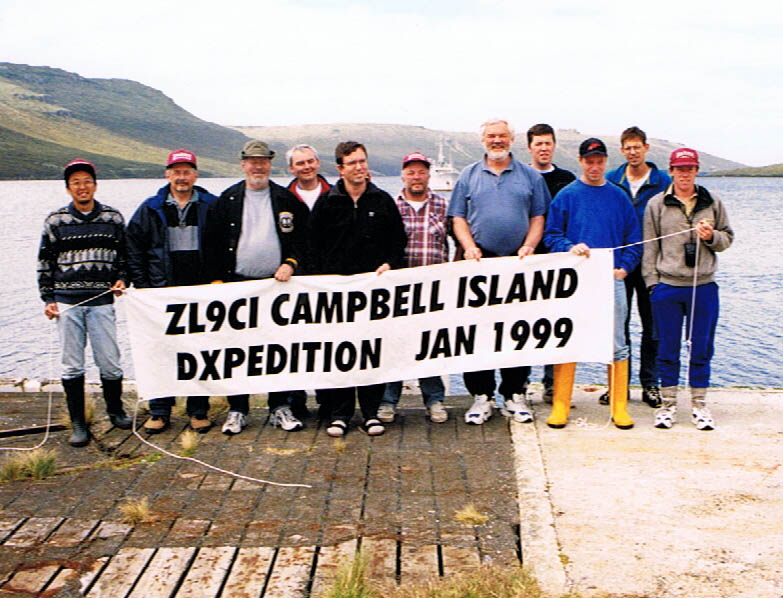 Ken Holdom ZL2HU – Leader and administrator, Lee Jennings ZL2AL – Logistics and planning of people and equipment, James Brooks 9V1YC – Radio operations manager. Declan Craig EI6FR and Andrew Williamson GI0NWG were in charge of the design and operation of the antenna systems. Ken Holdom ZL2HU and Murray Woodfield ZL1CN were in charge of the power distribution. Junichi Tanaka JA4RHF- RTTY and 6 metres. Trey Garlogh N5KO and Wilbert Knol ZL2BSJ- computer operations and logs, Brian Biggings VE3XA – Safety and Jason Christiensen ZL2URN was the Department of Conservation representative which rounded out the team of eleven. The team actually could have been twelve but unfortunately, when the twelfth position only became available during the last few weeks before we sailed. The position went begging as we were unable to find an operator to fill it!
Ken Holdom ZL2HU – Leader and administrator, Lee Jennings ZL2AL – Logistics and planning of people and equipment, James Brooks 9V1YC – Radio operations manager. Declan Craig EI6FR and Andrew Williamson GI0NWG were in charge of the design and operation of the antenna systems. Ken Holdom ZL2HU and Murray Woodfield ZL1CN were in charge of the power distribution. Junichi Tanaka JA4RHF- RTTY and 6 metres. Trey Garlogh N5KO and Wilbert Knol ZL2BSJ- computer operations and logs, Brian Biggings VE3XA – Safety and Jason Christiensen ZL2URN was the Department of Conservation representative which rounded out the team of eleven. The team actually could have been twelve but unfortunately, when the twelfth position only became available during the last few weeks before we sailed. The position went begging as we were unable to find an operator to fill it!
Financing
It is a fact of life that modern DXpeditions are no longer run on shoestring budgets. Small budget limit options and the results will reflect those limited options. Our biggest problem was finding the perfect boat. The “Braveheart” was excellent for our purposes as we were able to live on board for a month. It would also get us there and back safely. It was also expensive for a small organization such as ours. Each member of the team was required to put “money on the table” many months before we left to cover part of the $90,000 budget. This requirement sorted out the serious DXers. The Kermadec DX Association relied heavily upon many sponsors and many donations from the individuals and DX organizations around the world. We are deeply indebted to the international amateur community and our commercial sponsors. Without their extremely generous support, ZL9CI would not have happened.
Support
Lyndon Neuronburg VE7TCP set up KDA, a private reflector – bulletin board on the Internet for us. It is doubtful that we could have arranged all the details and solved the problems without it. We are deeply indebted to Lyndon. KDA has run for nearly two years. Threads arose, heated debate took place, ideas were floated, arguments ensued, problems were solved, decisions were made and the threads died only to be replaced by new ones. The KDA reflector allowed each of us to get to know each other‘s capabilities and strengths. It is a tribute to the members of the team that when anything was required of any team member, it was done without a problem.
We must pay also pay tribute to our Webmaster and pilot Don, N1DG and our other pilots Ron Lago AA7DX, Rob GI0KOW and Joe Aoki JJ3PRT. Special thanks must go to Chris Hannagan ZL2DX who was the other end of the Pactor link in New Zealand. Chris downloaded all our logs and forwarded all our e-mail traffic to friends and family. Bob Sutton ZL1RS built our 40M Four Square array and researched the propagation possibilities for the Dxpedition. Support was given by ZL2TT, ZL2GI and other local NZ amateurs. The help from these dedicated and professional amateurs was incredible. Being out in the middle of nowhere at the bottom of the world means that you lose touch with what’s going on in the rest of the world. No TV or Newspapers on Campbell Island! Our pilots and friends in New Zealand kept us in touch with reality.
Wellington Departure
Jan 29 saw the first meeting of the full team. Ken ZL2HU offered to host the whole team in his Wellington home until we left. Ken’s wife Emily was extremely tolerant and a wonderfully host. Most of then team members had never met each other previously. Early meetings went smoothly. NZ runs on 230V and plugs were changed and radio gear checked for operation. The computer gurus, Trey and Wilbert installed CT on all the laptops. To maximize the use of time in loading and checking gear, everyone ended up with jobs to complete. 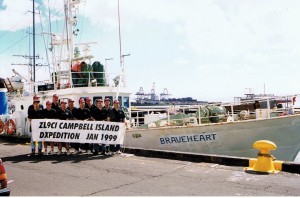 We then began the task of loading all five tonnes of equipment on the Braveheart and finished loading as the crew of the ship was frantically making last minute preparations and loading provisions. Dinner was pleasant at a local Chinese restaurant with the team and the support people, Ron ZL2TT, Chris ZL2DX, Win ZL2GI, Bob ZL1RS and others. The following night saw many of the local amateurs call in at Ken’s home and wish us well for the voyage South. We were ready to leave on January 1. Emily was ready for us to leave also!
We then began the task of loading all five tonnes of equipment on the Braveheart and finished loading as the crew of the ship was frantically making last minute preparations and loading provisions. Dinner was pleasant at a local Chinese restaurant with the team and the support people, Ron ZL2TT, Chris ZL2DX, Win ZL2GI, Bob ZL1RS and others. The following night saw many of the local amateurs call in at Ken’s home and wish us well for the voyage South. We were ready to leave on January 1. Emily was ready for us to leave also!
Voyage to Campbell
Up early, some team members were showing the effects of New year’s Eve. The weather was overcast with slight rain. The trip out the Wellington Harbour was magnificent and we were joined by dolphins. Obviously a good omen. Shipboard life was settled into very quickly and you could feel the excitement building within the team. A 20M dipole was hoisted into the rigging and the team got into the serious business of letting the outside world know that we were maritime mobile on our way South. Brian, VE3XA kept track of our progress on his portable GPS. Dinnertime saw us cruising East of the South Island working the mainland local 2 meter repeaters in glorious weather with six foot swells.
Shipboard Life
Jan 2 was antenna day. Eight antennas were assembled on the rear deck of the ship in excellent weather. The Braveheart was stable with a gentle pitch and roll. Seabirds, like miniature fighter aircraft, did runs at the boat looking for food in the ship’s wash. A beautiful sunset appeared on the horizon as we left Stewart Island at the bottom of New Zealand. We changed coarse and headed South East to began the run for Campbell Island. Immediately the ocean changed with larger swells. The boat rolled and pitched in protest. Great fun was had on the air with the FT900 and dipole hung up in the rigging. Amazing contacts were made world wide.
And then the weather began to deteriorate. There was a cold snap in the air. Waves grew larger and winds crept up to 30 knots with the boat being tossed around. Most of the team went into hibernation down below in their bunks. Less rolling there. The decision to assemble antennas the previous day was the right one. 40 knot winds howled across the rear deck and the wind was blowing froth off the top of the waves. It was quite uncomfortable. Few of the team had lunch Dinner was a non event. Days turned into nights and soon the Captain confirmed that we would make landfall at Campbell much earlier than expected
Arrival
On the evening of January 4, Campbell Island appeared on the ship’s radar. Soon it loomed out of the mist. We arrived at Perseverance Harbour around 9 PM, having arrived 24 hours earlier than planned. Sea lions cavorted around the boat while giant Royal albatross cruised the cliffs above the harbour. Campbell Island was windswept, cold, misty and quite beautiful. The complete team suddenly appeared on the deck, having made an miraculous recovery from their seasickness. Congratulations all around was followed by a meeting with Nigel and the crew of the Braveheart. They would help us get the equipment ashore at 4 AM. Antennas were top priority. We could only pray that the weather would hold.
Setup
Jan5 Up at 3.30 AM and on to Campbell Island by 4 AM. A look around showed many buildings suitable for our operating site and in the end it was decided to set up the eight complete stations at the old Meteorological Office. The building had many empty rooms and was perfect as our centre of operations. Simultaneous CW and SSB operation on the same band was a priority and it was decided by Declan and Andrew that two antenna sites would be developed. The first antenna field for SSB was sited north of the building and the CW antenna site was developed south of the shack.. The separation was 200 metres.
The sea lions were incredibly inquisitive, very aggressive and quite territorial. As we landed they were around the wharf and foreshore challenging us with large grunts. Later on in the morning, as we were assembling the yagis with the 15M and 20M monoband yagis on the ground in pieces, two young male sea lions approached aggressively, and chased several team members around the building. The sea lions then reclaimed their territory, which unfortunately was covered by two very large yagis. Chaos reigned with sea lions, guy wires, yagi elements, nuts and bolts, hand tools, coaxial cables and guy ropes all mixed up together. After much laughter and a lot of running by the team members the sea lions departed the antenna assembly area. We stayed a safe distance away as they left and worked the rest of the day looking over our shoulders.
After 14 hours of setup time without a break, both Nagara WARC antennas, the 20M Force 12 and Cushcraft 20M yagis, both Cushcraft 15M 5el yagis and the two Cushcraft 5el 10M yagis were in place The 30M Gladiator vertical, 80M vertical and Battlecreek Special 80M/160M were installed the next morning. All equipment was off loaded from the boat and the generators were ready for operations. The next day starting at 4AM saw us setting up the shack and running antenna tests. We could actually hear amateurs around the world taking about ZL9CI before we went on the air. The whole ZL9CI site was ready to go in 29 hours of setup time. The weather was perfect.
On the Air
Jan 7 saw frantic, last minute preparations. The shack turned into a battle zone with James, the five star general in command, issuing orders, answering questions and getting the last minute checks completed. The first QSO was completed with Don N1DG, one of our two USA pilots. A team meeting followed for 20 minutes and then James said “Have fun guys” It was all go.
What a blast! The ZL9CI hit the air in style with over11,000 QSOs in the first 24 hours. We opened with six stations operating on most bands to give everyone a good chance of working us. The CW operators were hot and accounted for more than half of the QSOs. We were given a taste of how bad the weather can become in an hour or so when a storm dropped the temperature and hit the antenna system with 70 knot gusts of wind late in the afternoon. The bad weather resulted in dangerous conditions to transfer the team off the island to the Braveheart and we were forced to stay ashore for the night much to the joy of 160M and 80M amateurs around the world. Trey N5KO, Declan EI6FR and Andrew GI0NWG were very popular on low band CW. 160M was brilliant all night with Trey racking up 180 QSOs. Everyone was extremely tired the next morning, The only damage sustained was that one of the 20M Yagis rotated a reflector to the vertical position.. The pileups were astonishing, with a solid wall of signals from EU, NA or JA depending on where the antennas are pointed.
The high QSO rate produced plenty of tired grins and high fives when the logs were merged the next morning. Each day, the logs were compressed, sent by a PACTOR 2 link, (equipment provided by SCS of Germany ) to ZL2DX in New Zealand who forwarded them on for access on the QSL log server. The team made every effort to make the contacts, calls and logs highly accurate.
Individual CW team members were working over 200 per hour on a regular basis. We put up a second 80M vertical so that we could run 40M, 80M and 160M at the same time. There were a few technical problems with co-station interference on SSB between stations. We never did resolve the problem satisfactorily which meant that 12M, 15M and 17M couldn’t be run on SSB simultaneously. The CW setup hummed! Walking into the shack and looking at the CT screens hour by hour was amazing. The totals grew alarmingly. At this time, after 2 ½ days operations we had over 20,000 QSOs in the log. One objective of this Dxpedition was to give everyone, in every country that elusive “new one” The 100W trap vertical stations seem to be able to work us as easily as the big guns. We tried to work everyone on an equal basis and enjoyed the great feedback from our pilots.
The pileups were beyond our wildest dreams hour after hour. The CW guys were able to work the pileups better than the SSB team. “We have digital ears you know” The SSB ops were not impressed. Europe was a priority for the Dxpedition and we were able to lay down a good signal into EU most nights. The pileups were very, very well behaved with plenty of patience and good will flowing both ways. Internet feedback from the Pilots showed we were right on the money with EU.
Jan 13 was an excellent day. We hit 43,000 QSOs and 6,500 for the 24 hour period. We could feel the pileups getting larger day by day. They should have been diminishing. The WARC bands were huge with amateurs wanting a new one. And then on Jan 14 at 4.30 AM somebody switched off the bands. The Aurora Australis, or sunspots, or Murphy hit us. It didn’t really matter what it was. The bands were dead for about 12 hours. Nothing. Not even the broadcast stations were heard. Total wipeout. And a much needed rest for the ops. We made 85 QSOs with six stations in 12 hours. Another world record. Sunspots with a vengeance!!!
40M SSB was activated and James ran huge totals for a few hours. 40M and 80M CW and SSB featured more in our schedule as we moved closer to our shut down planned for January 24. Our 6M beacon was heard in VK and the first 6M QSO took place with VK2DN The beacon operated continually every day listening for answers on 50.110 mHz. One evening around 6 PM, as we were leaving the shack, Lee heard a reply on the beacon. “Get Jun back here” he yelled. Jun proceeded to work over 50 JAs within an hour or so. He became an instant celebrity in Japan. Tests operations began on 80M SSB and 14 mHz RTTY which caught the DX community napping. We continued to put QSOs in the log averaging around 6000 per day.
The team was informed by the ARRL that we were the recipients of the Colvin Award grant for 1999. The team extremely pleased at receiving this award as we were carrying on DXpeditioning in the tradition of Lloyd and Iris Colvin who gave so much to the amateur community in the many years they traveled the world giving out “new ones” Our heartfelt thanks to the ARRL and the members of the amateur community for supporting this Dxpedition.
Shipboard Life at Campbell Island
The “Braveheart” is an ex Japanese research vessel ship of around 134’ long with a high bow for breaking into heavy seas. It is capable of a 9000 km journey at a speed of just under 10 knots and it is well appointed with all the latest navigation and satellite equipment. Life on board was fascinating. The ship was designed for Japanese sailors and Murray, who is well over 6’ tall had to duck as he navigated down the companionways The bunks down below were compact and comfortable. Going below to sleep was hazardous if the ship was pounding into heavy seas or if anyone else came toward you in the tight companionway. There was a shower on board in a compartment in the aft deck. Hard to use in rough weather. Very exciting if you drop the soap. The ship’s galley is small but Nigel, the ship’s owner was an excellent cook. Nobody was allowed in his kitchen. “If I catch one of you teddy bears in my kitchen, there’ll be hell to pay” he roared. Meal times were usually split into two shifts so that ZL9CI could stay on the air with half the team.
The end of the day, just after midnight was the time for “What’s happening?” and “How was 15M tonight?” and “Did you hear that amazing pileup on 40M?” The banter lasted about an hour and then the guys slowly disappeared down below for sleep. The computer operations room was in the bow next to the anchor locker where we had a Pactor terminal driving a small transceiver into a 40M dipole up in the rigging. Another laptop was used for writing E-mails etc. Sleep only lasted five or six hours until one of the ship’s crew woke up the morning shift for breakfast. Breakfast was usually quiet. Most of the team needed another ten hours sleep. But the pileups were just a fast Zodiac trip away in the dark to the island. We knew what was in store for us.
The ship was a happy one with Nigel (The ship owner), Tim(Captain), Bruce (First mate), Peter (Engineer), Matt (Nigel’s Son) and John (Deck hand) looking after the ship, helping us with anything we need and running us back and forth to the Island. And believe it or not, they did our washing with the ship’s automatic washer and dryer. The aft deck was big enough assemble a 15M yagi on and it has a BBQ table if you want to sit out there for a meal. It wasn’t used a lot in Campbell Island’s 6C degree weather!
A day in the Life of
4.00AM Any day. “Get up you teddy bears” the captain yells at us. My head hurts from last night’s pileups. Breakfast is corn flakes, toast and coffee on the fly. The Zodiac is a bit tricky, bashing against the ship with the waves. Five bodies in black rain gear time the rise and fall of the Zodiac and jump in safely. The black angry sea is not an option. The outboard motor sings and the Campbell Island foreshore looms out of the blackness. The ladder on the wharf is much steadier to hold on to. We trudge up the hill to get to the radio shack Dawn puts the sub Antarctic in shadow. The big rock in the pathway suddenly comes alive and lets out a roar that sends us all scattering. Sea lions are very territorial and the ZL9CI site has been theirs for the past 30,000 years. Ken starts the generators. The noise of five diesel generators keeps the sea lions away.
5.00AM The CW shack is humming. Why do those desk lamps constantly flicker? Trey N5KO is casually reading a copy of NCJ as he passes 200 QSOs per hour with the EUs on 30M. James 9V1YC is draped over the keyboard at an awkward angle. He is an ergonomically incorrect new age guy. I never noticed it before but he attacks the keys like he is playing a Rachmaninoff concerto. Andrew, GI0NWG blocks the computer with his frame as he stands at the keyboard. He makes CW look easy as he runs them on 40M this early morning. Doesn’t say much but speaks CW fluently.
6.00AM Standing in the howling wind and driving rain 100M from the shack, changing antenna directions sure dispels the romantic ideas of a Dxpedition. Check for sea lions. Quick… get the antennas turned to JA for the morning and get back at the radios. A large male sea lion is ambling up the path towards me as I sprint for the shack.
7.30AM The second shift team arrives. “What’s the total?” “Who’s on 40?” “Have you turned the 20M mono?” “How are the generators?” “Look out for 15 SSB … it’s getting interference
from 15 CW” “The CW guys are using the SSB WARC antenna – less interference” “Who’s got the 20M ICE Filter?” The SSB ops mumble pileups into their mouthpiece mikes. The shift changes smoothly. Declan is in the kitchen making a cuppa.
12.30AM Lunch. Captain Ahab (Nigel) has sent over the lunch in the Zodiac. Nice chicken and salad. We get individual lunch boxes with little drawings on top which denotes chicken, steak or pork. Funny, but the pork drawing looks like a demented cat! “Listen up guys” “This is the operating schedule for tomorrow” James 9V1YC holds fourth on the joys of sitting at a radio fighting off hordes of EUs. He explains how to handle them. We try in vain daily!
2.30PM “Any totals Wilbert?” Wilbert ZL2BSJ and Trey N5KO have been working on the logs for the past hour. We collect them at 0000 UTC daily and they hassle the computers for errors. Then they hassle the ops for making the errors. I get dirty looks. Things are not going well. Some op has logged 150 QSOs on the wrong band on CT and they all have to be changed manually. Why don’t ops use the check list? Compression ends the procedure and the logs are sent by Pactor on 40 M to Chris, ZL2DX for the log server in the US. There is relief that we got them away again today in spite of bad propagation on 40M.
3.00PM Declan, EI6FR is asleep in his op chair, oblivious to the world around him. He needs the sleep and we leave him there. The bands are quiet this time of day. Running huge pileups on 30 M early each morning is very tiring.
4.00PM Turn 20M beams to USA/EU for the night. “Hey … some guy wants to know why he isn’t in the log on 160M” shouts Murray ZL1CN from a run of US stations on 15M. We all laugh. The guy has no idea of what he has asked for! Just another problem that will surface 3 months after we are back home.
5.00PM Lee listens in disbelief to some guy in W6 land who offers to give him a number if it will help and then says “I’m not in the contest” He’s not from this planet either!
6.30PM “See you later guys” Half the team goes off to the ship for dinner. Nice too! Captain Ahab(Nigel) makes a great plate of spaghetti. Is the weather too rough to transfer back tonight? No such luck! Dinner is eagerly consumed. “What did you do on 12M” “10M was hot” “Are you going to work 20SSB tonight?” Radio conversation is mixed with “Pass the salt” Brian VE3XA admits he’s a bit homesick. “OK guys, get the life jackets on” We face the wind, rain, rough seas and the Zodiac yet again. Nobody likes it. Bureaucracy dictates that we must like it.
8.00PM “Europe only, Europe only – ZL9CI” Lee, ZL2AL tries to keep the rate up on 20 SSB It’s impossible as 5000 EUs try to fit into 15 kHz. His S-Meter suffers terminal overload. Lee takes five and has a cuppa coffee.
9.00PM 15M is open to EU. The keyboards in the CW shack take on a life of their own and click incessantly like demented robots. James looks like he is asleep. His CT rate meter indicates he’s not. It’s well above 200 and climbing as he shovels a pileup.
9.30PM Andrew GI0NWG is having a session on 40M with a pack of rowdy EUs. He tries to control it with little success. It’s one of life’s ironies that DXers call at the wrong time and don’t hear us. We don’t them and need to. Perhaps someone will invent a Packet like, non -crashing SSB audio system someday. And pigs may fly one day!
10.00PM Brian, VE3XA observes dryly “How can they hear us if they don’t stop shouting at us’ Good point!
11.45PM It’s over. We have to be off Campbell Island by midnight. The trip back in the Zodiac is cold but uneventful. I can’t wait for a shower and bed. Wilbert is in the office working on the Pactor. “Hey guys… you should see the E-Mails and comments from the pilots” We grab the printouts eagerly. “Look at this…. Best Dxpedition ever” “Congratulations to the team” “Wow, look at these” It’s all worth it. Eleven days operation and over 60,000 QSOs in the log! Time to bask in the glory tomorrow. It’s only five hours till Captain Ahab kicks us out of bed again at 4 AM. Gotta get some shuteye! And I know I’ll be working EUs again tonight. The DXpedition in my head starts each night when I close my eyes.
Flora and Fauna
We left the Braveheart each morning and marveled at the sea lions that played around the boat and followed our Zodiac ashore. Sea Lions became a feature of each day. They were everywhere, alternatively terrorizing the team members or having us in fits of laughter. They lurked in the bushes and tussock and let out a roar left you speechless and clutching your heart. The sea lions were always crashing through the brush around the antennas. It was inevitable that one would drag an antenna guy wire. We looked in disbelief one morning at our beautiful 40M four square vertical array that became a three square array overnight. The culprit was a sea lion that snagged a guy rope on a flipper. The aluminium vertical pole bent and snapped about 2 metres off the ground.. The antenna team repaired the vertical and it was back in service within a few hours.
It was a rule that two team members travelled together when changing antenna directions outside. We couldn’t decide which was worse – the Sea Lions or a pack of hungry amateurs looking for us on the low end of 20 meters. We found one of the few remaining sea elephants. in the bay about 1 km from the ZL9CI site and now know why they are called an elephant seals. This particular animal was very near the shore. We were able to get within 5 metres, as it was in shallow water. It was over five metres long and we estimated it would weigh about 1000 kg It was enormously impressive. It looked at us curiously and went about it’s business of resting it’s bulk on the rocks at the shore. A hundred years ago there was probably thousands of them around the harbour.
Often, during the afternoon some of the radio bands went dead. 10M, 12M and 15M were poor and 20M didn’t open until later in the afternoon, around 0600 UTC. Team members often went for walks to look for wildlife with Jason Christiensen ZL2URN “DOCMAN” Jason is a young, very physically fit Kiwi bushman. Just the kind of guy we didn’t need leading some of the more geriatric members of the team on long walks. 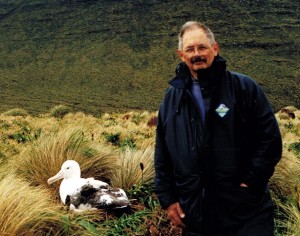 One afternoon six of us went to see the Royal Albatross colony up in the hills. This required a four hour return walk of about 6 km. We really enjoyed the trip and Jason was very tolerant of the old fellas! It was a great day weatherwise and a wonderful day’s outing. Albatross are incredible flyers and soar around the ridges for hours like hang gliders. They skim the ocean just a few cm above the surface without touching. Magic!. Albatross are about the size of a Christmas goose which has a very large hooked beak and a wingspan over 2 metres in length. We saw many pairs nesting and watched as one bird turned over the job of sitting on the nest while the other went out to sea to look for food. They practiced equality of the sexes. On another occasion Jason took half the team up to North East harbour, a very long day’s walk. Murray ZL1CN raved over the view the rest of us didn’t see. They all slept well that night.
One afternoon six of us went to see the Royal Albatross colony up in the hills. This required a four hour return walk of about 6 km. We really enjoyed the trip and Jason was very tolerant of the old fellas! It was a great day weatherwise and a wonderful day’s outing. Albatross are incredible flyers and soar around the ridges for hours like hang gliders. They skim the ocean just a few cm above the surface without touching. Magic!. Albatross are about the size of a Christmas goose which has a very large hooked beak and a wingspan over 2 metres in length. We saw many pairs nesting and watched as one bird turned over the job of sitting on the nest while the other went out to sea to look for food. They practiced equality of the sexes. On another occasion Jason took half the team up to North East harbour, a very long day’s walk. Murray ZL1CN raved over the view the rest of us didn’t see. They all slept well that night.
Customer Services
Our customers were the international amateur radio community. There is an old saying that “The customer is always right” That’s not true. Every customer has a right to fair treatment. Our policy was just that. Give everybody a fair treatment and a fair opportunity to work ZL9CI. When we were inundated with thousands of requests such as “When are you going to be on?……”Can you QSY to”? etc. etc. etc. it slowed our rates down. Individual operators were unable to change operating schedules or QSY to other bands or modes at any time. There were 11 operators, seven stations and it was an intricate job to obtain the maximum performance from the equipment and the operators. Operators were scheduled by the Radio Operations Manager days in advance for the various shifts. Individual operators were very, very tired, working long shifts. It was like working the CQWW for weeks on end! They tried not to be upset with the few jammers, hecklers and strange requests. The feedback we received by e-mail was a wonderful help and incentive for the ops to keep calm and cool.
Campbell Island is 2000 km south of ZL1 and over 4000 KM south of 3D2. It is also 4000 km east of Australia. Radio propagation is a funny thing. You may be hearing ZL1 – ZL4 very well. That has little to do with ZL9. We laughed when some breathless amateur exclaimed that “the must be propagation, it’s dark in ZL”. It was also light on Campbell at the time we were required to be off the island. There were times when we couldn’t even hear the ZL mainland! Most of us forgot what TV, broadcast radio and music was! In general, the higher bands 10, 12 and 15 never really performed as well as we thought that they might. There was another DXpedition on from the Australs at the same time. They were working thousands of US and JA from the equator. We couldn’t even hear them!
30M was an outstanding band, yielding thousands of QSOs from early morning until we closed down. Serious DXers need to be on 30M. The six meter beacon was monitored every day for replies. We worked ZL, VK and JA. We were never able to work the USA on that band. Over 1400 RTTY QSOs took taken place on 20M and 15M. We purposely left the lower bands until late in the Dxpedition, with the exception of the first night when we were forced to stay overnight. That opportunity never happened again, unfortunately.
Totals and all that
From time to time, it was suggested that we should “go for the record” by well meaning amateurs that we worked That meant concentrating on the record totals of the VK0IR DXpedition. The team discussed “That Record” about half way through the DXpedition. Our operations strategy was sound and the objectives we had written a year earlier were achievable. The overwhelming opinion of all the team was to carry on as we were, allowing as many amateurs as possible to work us on as many bands and modes as possible. If we passed the VK0IR record, it was a bonus. The real objective of ZL9CI was to have fun doing what we were doing and to help as many as possible to obtain a “new one” We all agreed and never wavered from that objective. We received several messages of congratulations from the VK0IR team as we left the island. At the end, as we closed down, I was personally pleased that we didn’t surpass the 100,000 QSO mark. I am glad we left the carrot dangling there for another team sometime in the near future. It will surely happen!
Return Home
The team closed down ZL9CI today after achieving all it’s objectives. It took just 9 hours to dismantle the antenna system and the eight stations. Perhaps a measure of how much we want to get home. The barometer has been dropping for the past 30 hours and the weather for the trip home does not look all that promising. We sail in another few hours and the team is heavily into seasick pills at present. We expect to be back in New Zealand around February 1. The logs containing 96,004 QSOs have been uploaded to the log server and are now complete.
Equipment
Each piece of equipment was listed with it’s source. Much of the gear was lent to the Dxpedition by team members. The rest came from major and minor sponsors. We lost a second generator a few days ago. The ship’s engineer took it apart and it is one sick puppy, for sure. The team has had to conserve power and some of the stations will operate with 100 watts instead of 400 watts as we usually do.
Acknowledgments
The ZL9CI team – Ken ZL2HU, Lee ZL2AL, Declan EI6FR, Andrew GI0NWG, James 9V1YC, Jason ZL2URN, Brian VE3XA, Jun JH4RHF, Wilbert ZL2BSJ, Trey N5KO, and Murray ZL1CN would like to say thanks to the amateur radio community and our sponsors around the world for their fantastic support and great E-mails. It has inspired us to give as many amateurs as possible a chance to work Campbell Island.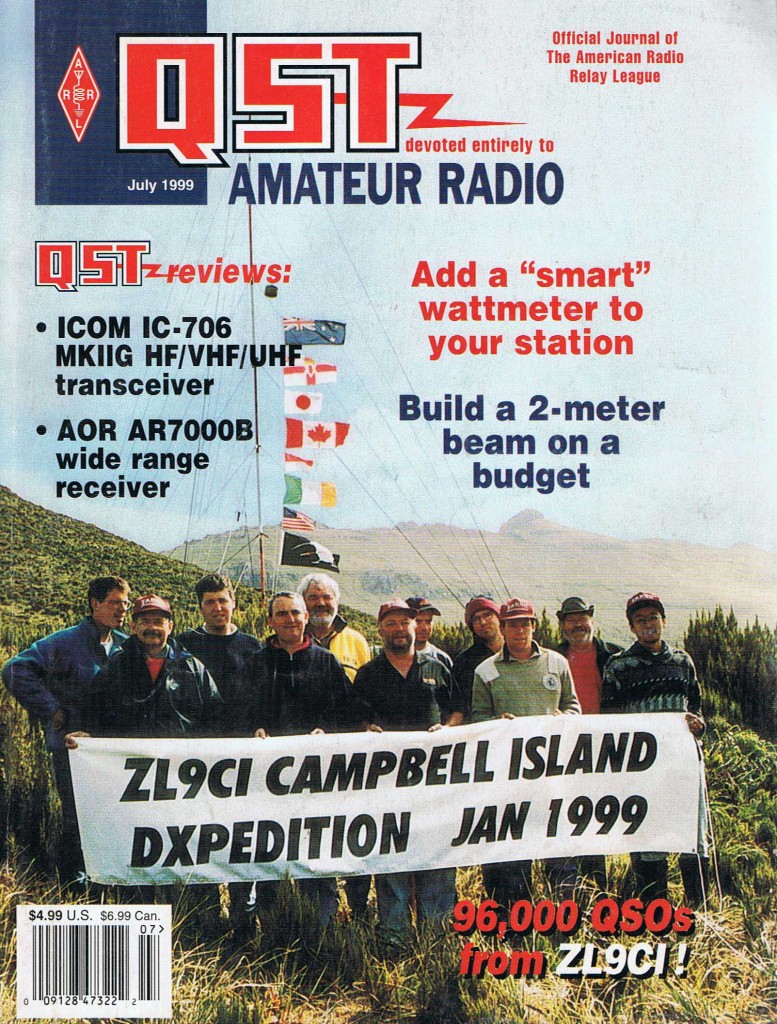

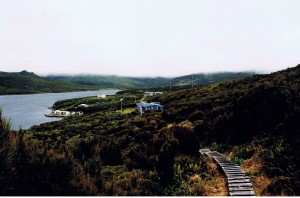

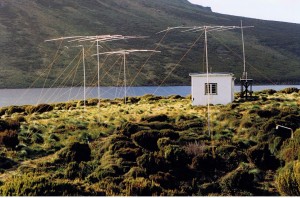
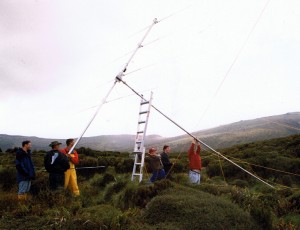
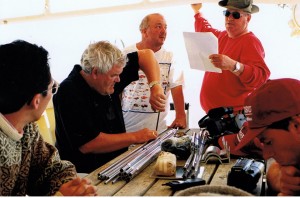
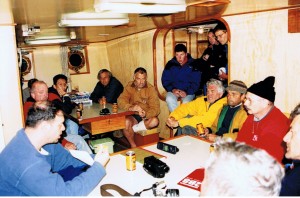
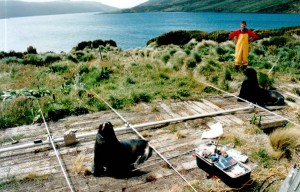
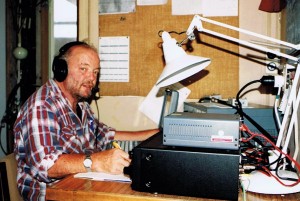
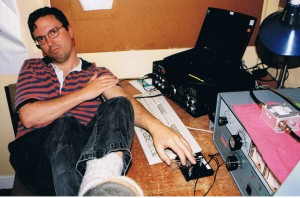
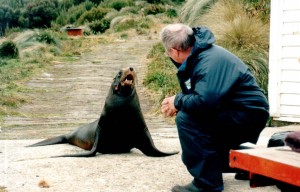
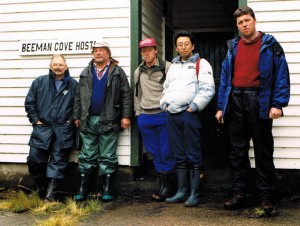
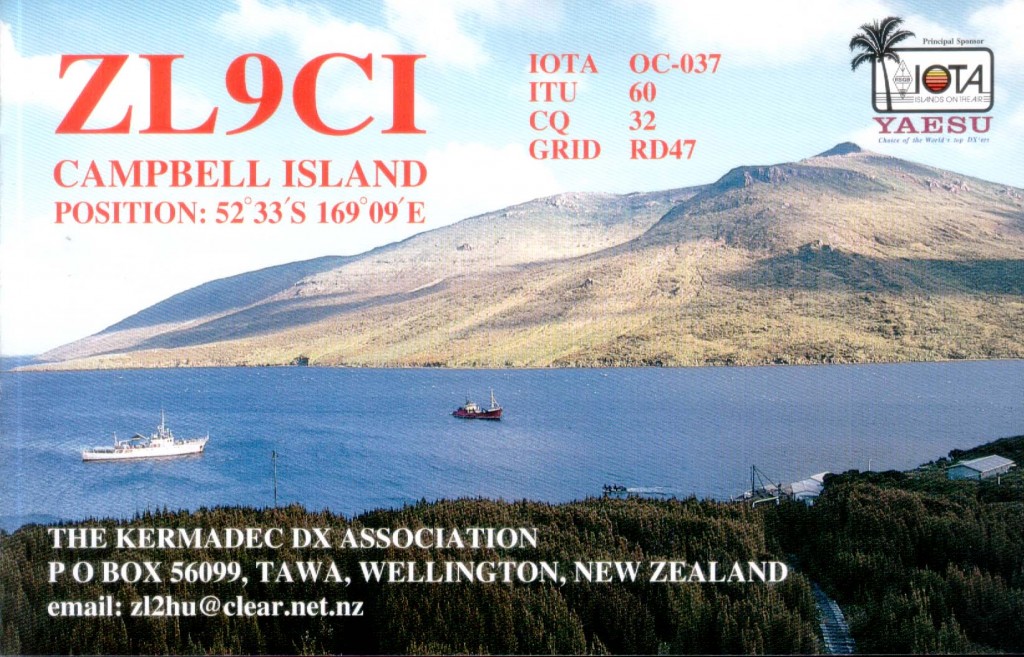
Hello….i want to know if you have any video available of this Expedition, also
pictures of high resolution…..including flora and fauna..
Best Regards Rei YV8AD